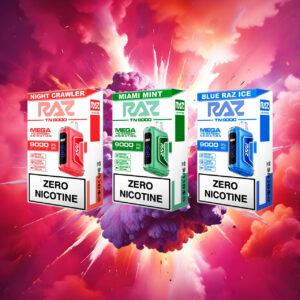Wholesale Interior Lighting Comprehensive Guide to Bulk Purchasing and Design Trends
Interior lighting plays a crucial role in defining the ambiance, functionality, and aesthetics of any space. Whether for homes, offices, hotels, or retail stores, the right lighting enhances productivity, mood, and comfort. Wholesale interior lighting offers cost-effective solutions for businesses, designers, and property developers looking to source high-quality lighting fixtures in bulk. This article explores the advantages of wholesale lighting, key factors to consider, popular lighting trends, and tips for selecting the right supplier.
Benefits of Wholesale Interior Lighting
1. Cost-Effectiveness
Purchasing lighting fixtures in bulk significantly reduces the per-unit cost, making wholesale interior lighting an economical choice for businesses, contractors, and large-scale projects.
2. Consistent Quality and Design
Buying wholesale ensures uniformity in design, color temperature, and quality across multiple fixtures, which is essential for maintaining a cohesive look in large spaces like hotels, offices, and commercial buildings.
3. Wider Selection of Products
Wholesale suppliers often offer a diverse range of products, from chandeliers and pendant lights to LED panels and recessed lighting, catering to different styles and applications.
4. Customization Options
Many wholesale suppliers provide customization options, allowing buyers to tailor lighting fixtures according to specific design preferences, wattage requirements, and materials.
5. Bulk Availability
Wholesale suppliers maintain large inventories, ensuring the availability of products even for extensive projects that require numerous fixtures.
Key Factors to Consider When Buying Wholesale Interior Lighting
1. Lighting Type and Functionality
Different spaces require specific types of lighting. Understanding the purpose of each area helps in selecting the right fixtures:
- Ambient Lighting: Provides general illumination and sets the overall mood.
- Task Lighting: Focused lighting for workspaces, reading nooks, or kitchen counters.
- Accent Lighting: Highlights architectural features, artworks, or display areas.
2. Energy Efficiency
Opting for energy-efficient solutions such as LED lighting reduces electricity costs and contributes to sustainability. LED lights also have a longer lifespan, reducing maintenance expenses.
3. Color Temperature and Brightness
Measured in Kelvins (K), color temperature impacts the ambiance of a space:
- Warm White (2700K-3000K): Ideal for cozy and intimate settings like bedrooms and restaurants.
- Neutral White (3500K-4500K): Suitable for offices, retail stores, and kitchens.
- Cool White (5000K-6500K): Best for hospitals, industrial settings, and task-oriented spaces.
4. Quality and Certification
Ensuring that the lighting fixtures meet industry standards and certifications such as UL, CE, and RoHS guarantees safety, durability, and compliance with regulations.
5. Supplier Reputation and Reliability
Choosing a reputable supplier with positive customer reviews, transparent policies, and a proven track record ensures high-quality products and reliable service.
Popular Interior Lighting Trends in 2024
1. Smart Lighting Solutions
With the rise of smart homes and offices, demand for smart lighting systems that can be controlled via apps, voice assistants, or automation is increasing.
2. Minimalist and Sleek Designs
Modern interior trends favor minimalist, clean-lined lighting fixtures that blend seamlessly into contemporary spaces.
3. Sustainable and Eco-Friendly Lighting
Recyclable materials, solar-powered options, and energy-efficient LEDs are gaining popularity among eco-conscious buyers.
4. Industrial and Vintage Styles
Rustic finishes, exposed bulbs, and metallic tones are making a comeback, especially in restaurants, lofts, and creative workspaces.
5. Customizable Lighting
Adjustable brightness, color-changing LEDs, and modular lighting systems are trending for their versatility and personalization options.
How to Choose the Right Wholesale Interior Lighting Supplier
1. Evaluate Product Range
A good supplier should offer a variety of lighting types, styles, and technologies to cater to diverse needs.
2. Check Customer Reviews and Testimonials
Past customer experiences provide insight into product quality, delivery reliability, and customer service.
3. Assess Pricing and Discounts
Compare prices across different suppliers and look for bulk discounts, seasonal promotions, or long-term partnership benefits.
4. Inquire About Warranty and Support
A reliable supplier should offer warranties on their products and provide after-sales support in case of defects or installation queries.
5. Ensure Compliance with Safety Standards
Verify that the supplier adheres to industry safety and energy efficiency standards to avoid potential hazards.
Conclusion
Wholesale interior lighting is an excellent solution for businesses, contractors, and designers looking to source high-quality lighting fixtures at competitive prices. By understanding key factors such as functionality, energy efficiency, and supplier reliability, buyers can make informed decisions that align with their project needs. Keeping up with lighting trends and selecting the right wholesale supplier ensures a cost-effective and aesthetically pleasing lighting solution for any space.














Post Comment